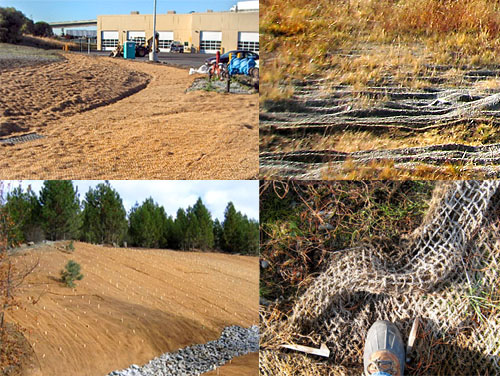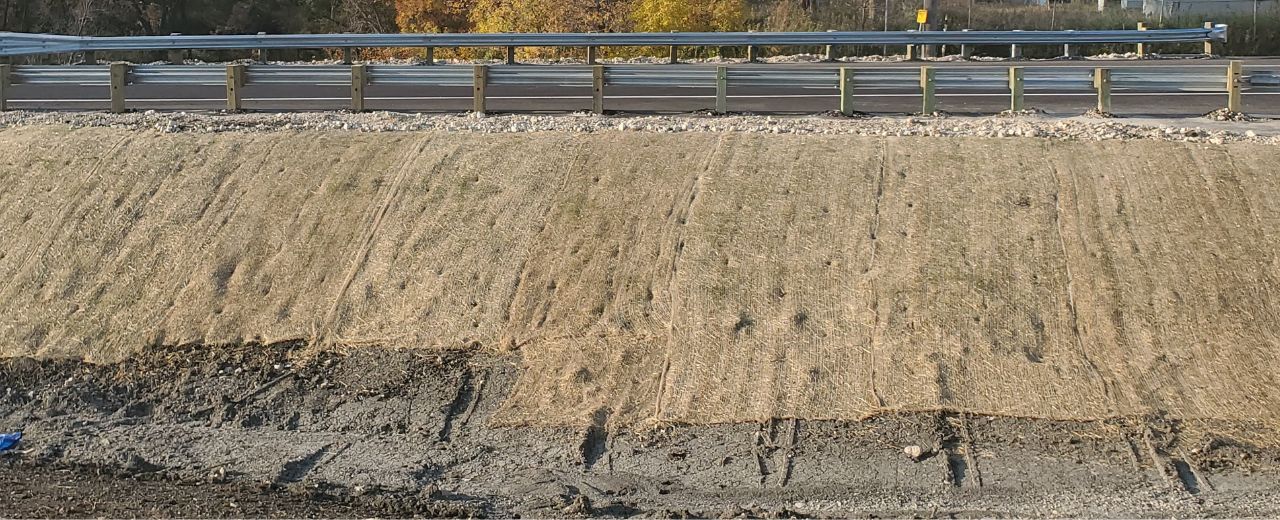Erosion Control Providers: Shielding the Setting
Wiki Article
Best Practices for Disintegration Control in Construction Projects
Are you working on a building project and concerned about disintegration control? In this short article, we will guide you via the ideal techniques for protecting against disintegration on your website. Memphis Erosion Control Solutions erosion control company. Obtain prepared to tackle disintegration head-on and guarantee the success of your construction job.5 Important Disintegration Control Strategies

To properly regulate erosion on your building and construction site, you'll need to apply crucial methods such as incline stabilization and debris control procedures. Slope stablizing is important in avoiding dirt disintegration on steep inclines. You can achieve this by making use of methods like terracing, which involves developing horizontal actions on the slope to reduce water flow and promote the absorption of rainwater. An additional effective strategy is making use of erosion control blankets or floor coverings, which are put on the slope and aid retain dirt bits while allowing greenery to expand. Sediment control procedures are likewise vital to avoid debris drainage into neighboring water bodies. One efficient approach is the installation of silt fences along the perimeter of the building and construction site. These fences function as obstacles, capturing sediment-laden water and permitting it to resolve before it reaches the water bodies. Furthermore, you can make use of sediment basins, which are short-lived retention ponds designed to catch sediment and enable water to gradually drain off. Implementing these crucial erosion control techniques will aid lessen the adverse ecological influence of your construction project and make sure compliance with policies.
Efficient Sediment and Runoff Monitoring

You can efficiently take care of debris and runoff in your building and construction job by carrying out correct erosion control procedures. Debris and drainage monitoring is crucial to avoid disintegration and shield the surrounding environment. One effective measure is the installation of silt fences along the boundary of the building site. These fencings aid to contain sediment and prevent it from entering neighboring water bodies. Another essential practice is the implementation of erosion control coverings or floor coverings. These coverings give a safety layer on bare dirt, lowering the effect of rains and protecting against disintegration. Furthermore, the usage of sediment basins or sediment traps can help to record debris and stop it from entering stormwater systems. Regular upkeep of these procedures is essential to guarantee their performance throughout the building and construction task. This includes cleaning and evaluating debris basins and routinely changing silt fences and erosion control coverings as required. By implementing these disintegration control steps, you can efficiently take care of sediment and overflow in your building and construction job, reducing the influence on the atmosphere and following regulative requirements.
Trick Considerations for Incline Stabilization
When considering slope stablizing, it is necessary to evaluate the terrain and determine possible areas of instability. You need to meticulously take a look at the slope's attributes, such as its water drainage, composition, and angle patterns. Try to find indicators of disintegration, such as revealed origins, fractures, or down dirt. These indicators can give you an idea of where stablizing measures may be needed.As soon as you have actually recognized the unpredictable locations, you can begin executing procedures to support the slope. One common method is the use of preserving wall surfaces or terracing to produce a collection of level actions, which can aid disperse the weight and stop additional erosion. An additional alternative is to grow greenery on the slope, as the origins can assist secure the dirt and control disintegration. In addition, mounting erosion control coverings or mats can give instant security while vegetation comes to be recognized.
It's this article vital to consistently keep an eye on the stabilized slopes to guarantee their performance. Maintain an eye out for any type of signs of activity or disintegration, and take instant activity if needed. Normal maintenance, such as checking and repairing any kind of broken steps, is also necessary to guarantee lasting security.
Ideal Practices for Plants and Dirt Protection
One efficient way to secure plant life and dirt on inclines is by consistently inspecting for indicators of disintegration and taking prompt action if necessary. Begin by examining the slope for any type of indications of erosion, such as subjected origins, bare soil patches, or debris accumulation at the bottom. Implement disintegration control steps such as mounting disintegration control coverings, mulching, or even creating maintaining walls if required.Carrying Out Proper Water Drainage Systems
To landscape fountain properly execute correct drain systems, it's crucial to think about the incline gradient and dirt type. When it pertains to handling water flow and stopping disintegration, understanding these aspects is essential. The incline gradient plays a considerable function in determining exactly how water moves throughout the land. Steeper slopes can cause much faster water flow, boosting the risk of erosion and flooding. On the other hand, gentler slopes enable water to stream much more gradually, decreasing erosion potential. By analyzing the incline gradient, you can create a reliable water drainage system that suits the all-natural water activity.Dirt kind likewise influences water drainage system layout. Various soil types have differing degrees of leaks in the structure, impacting how water is absorbed and drained. For example, sandy soils often tend to drain pipes faster because of their rugged structure, while clay soils have a slower water drainage price due to their compact nature. Understanding the dirt type helps in picking suitable water drainage methods, such as making use of permeable products or installing French drains. In addition, considering the dirt qualities helps protect against waterlogging, which can bring about bad plant development and damage to frameworks.
Conclusion
In verdict, when it comes to erosion control in building and construction projects, you should adhere to these ideal techniques. Think about incline stablizing techniques to guarantee the security of the website. By adhering to these crucial practices, you can effectively manage disintegration and ensure the success of your building task.To efficiently regulate erosion on your building site, you'll require to implement crucial methods such as incline stabilization and sediment control actions. Slope stabilization is vital in preventing dirt erosion on steep great site slopes. One more effective strategy is the usage of erosion control blankets or floor coverings, which are put on the slope and aid maintain soil fragments while allowing plants to grow. An additional option is to plant greenery on the incline, as the roots can help anchor the soil and control disintegration. Implement disintegration control steps such as installing erosion control blankets, mulching, or also creating keeping walls if needed.
Report this wiki page